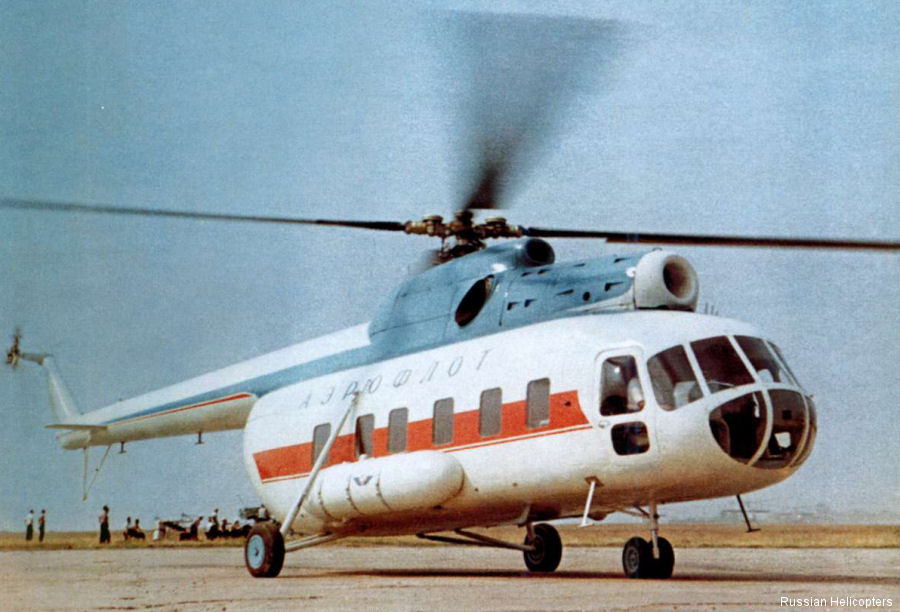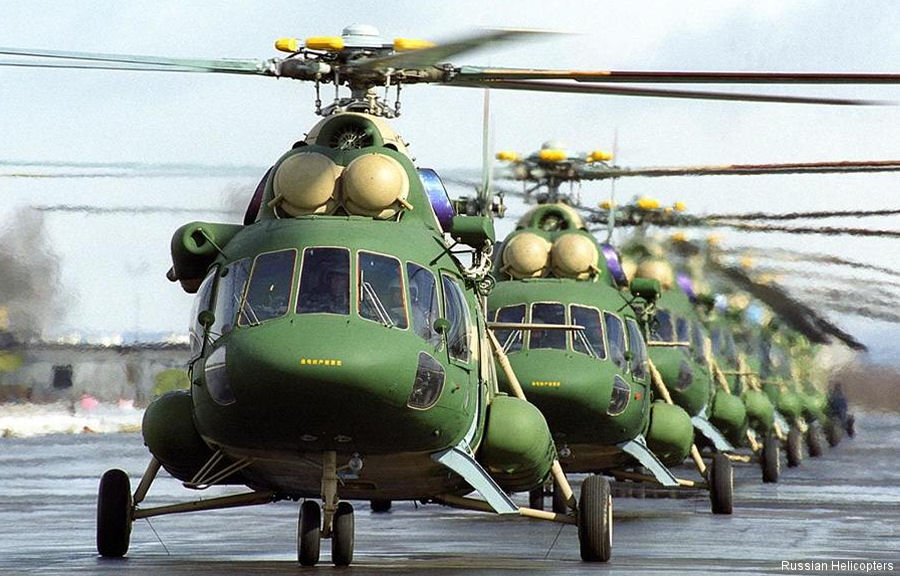
Its design proved to be so successful that the production and improvement of the Mi-8 has not stopped to this day.
The helicopter, which was destined to become one of the most popular in the world, was created at Mil Design Bureau in the late 1950s and early 1960s.
At this time, which would later be called the "thaw", the Soviet state began to pay more attention to the comfort of its citizens, the concept of design appeared, manufacturers began to think more about the convenience of users.
In addition, thanks to the detente of international relations, the military expenditures of the USSR were reduced, which made it possible to redistribute resources in favor of civilian goods. At the same time, the world helicopter industry was experiencing an unprecedented rise, and the Mi-8 became one of the peaks of this process.
At that time, Mil's team already had successful developments, including the first military transport aircraft, the Mi-4. This multi-purpose machine, loved by the military and supplied to other countries, was good for everyone except the aging piston engine. In 1957, the Milians created the transport giant Mi-6, which was lifted into the air by two turboshaft engines. Mikhail Leontyevich Mil wanted to use a similar scheme on a new universal helicopter.
Modification of Mi-4 with gas turbine engine
Since the military was quite happy with the existing Mi-4s, and it was the Air Force that Milem considered as the main "client" of the new development, the designer had to go for a trick to get the green light and funding. The development of the future Mi-8 was presented as a modification of the Mi-4 for a gas turbine engine. The trick worked, and on February 20, 1958, the OKB received a government order for a helicopter with the working name B-8. The first customer is the Ministry of Civil Aviation, represented by Aeroflot. A little later, the Air Force command also showed interest in the project.
As planned, the development of the future helicopter hit began with a high level of unification with the Mi-4. The use of the AI-24V aircraft engine made it possible to preserve the transmission of the "Quartet", from which the screws and many other elements remained. Significant changes affected the fuselage - the cockpit was moved to the bow and significantly updated, the engine was placed above the fuselage, the rest of the space was occupied by the cargo or passenger compartment.
The development of the V-8 was supervised by the deputy chief designer V.A. Kuznetsov, lead designer of the project - G.V. Remezov. In 1959, the first prototypes were created: the parts were manufactured by Plant No. 23, assembly was carried out at Plant No. 329, where the Mil Design Bureau operates.
The first B-8 was made in a passenger configuration with an 18-seat superior cabin. On June 24, 1961, the factory crew under the command of test pilot, veteran of the Great Patriotic War B.V. Zemskova lifts a new car into the sky for the first time. Two weeks later, the novelty was shown at the air parade in Tushino, and then exhibited at VDNKh. Such progress brings success, the helicopter is well received by the country's leadership. The B-8 is becoming an excellent example for demonstrating the latest technologies in helicopter construction - a spacious cabin, a cockpit with improved visibility, and serviceability.
However, Mikhail Mil is moving on to his big goal - away from the Mi-4 modification to the new twin-engine helicopter. In this he is helped by chance. In September 1959, Nikita Khrushchev paid an official visit to the United States, where he was impressed by the Sikorsky S-58 government helicopter with a spacious cabin, comfortable armchairs and a bar counter. The country's leadership gives the go-ahead for the development of the B-8 project with two engines, planning to use a more powerful and reliable machine as a helicopter salon during the return visit of the President of the United States.
On May 30, 1960, a decree was issued on the V-8A helicopter with two gas turbine engines. In the summer of 1962, a young OKB-117 under the leadership of S.P. Izotov (now UEC-Klimov presented the first special helicopter engine in the USSR. The appearance of the TV-2-117 engine was a significant event in Soviet helicopter construction, because before that, modified aircraft models were used on rotary-wing machines.
The Izotov Design Bureau also created a new gearbox - one of the most complex and important parts of the helicopter The use of two high-power engines made it possible to increase the passenger capacity and lifting capacity of the helicopter.
The advent of the new engine brought about many changes in the helicopter. In addition, the Milevites continued to improve the car: the propeller had a fifth blade, a three-point chassis, the hinged side doors were replaced with sliding ones. The helicopter, designated B-8A, with two gas turbine engines entered the tests in the passenger version. Its first flight took place on August 2, 1962.
New name and big series
The persistence of Mikhail Leontyevich and a well-chosen initial solution led to an outstanding result. In just three years, the designers managed to make a new aircraft instead of the Mi-4 modernization announced at the beginning. With the launch of the series, the helicopter was officially called the Mi-8. The production of machines was established at the Kazan Helicopter Plant. At the end of 1965, the first production vehicles rolled off the assembly line.
In June 1965, the Mi-8 was presented at the Paris Air Show and received high marks from foreign experts. In general, much attention was paid to the promotion of the helicopter abroad. During one of the "advertising" flights around the world, test pilot German Alferov flew the Mi-8 in the amount of 35 thousand km, that is, he practically flew around the globe.
The demand for the Mi-8 was so great that the second serial production had to be launched in Ulan-Ude. Civilians quickly appreciated the advantages of the new machine, but the military was in no hurry to replace the proven Mi-4 with a new helicopter. However, the participation of Soviet technology in the Vietnam War showed that the era of piston helicopters is a thing of the past. In 1968, the combat modification of the Mi-8 was adopted. Only after this important step, the helicopter developers were awarded state prizes.
The long and long life of the Mi-8 begins. The use of helicopters by the military is expanding, there are many highly specialized modifications: ambulances, miners, workshops, tankers, scouts, electronic warfare, amphibious helicopters and many others. In the civilian sphere, the G8 turned out to be especially relevant for work in remote and sparsely populated regions. In 1980, the helicopter was upgraded to the Mi-8MT model (the export version is the Mi-17), the modifications of which remain the most common today.
Mi-8, "eight" or simply "Russian helicopter" - today this classic rotorcraft is known all over the world. The unique combination of qualities and characteristics allows the Mi-8 to remain in service for six decades. About a hundred modifications have been created on the G8 platform, which perform a variety of tasks. Time has shown that the dimensions and carrying capacity of the Mi-8 are the most demanded in the world.
The development of the family continues today by the Russian Helicopters holding company of Rostec State Corporation: new engines, avionics, main and tail rotors, navigation systems, as well as the introduction of composite materials allow Mi-8 helicopters to meet the most modern aviation requirements. In the class of civilian heavy helicopters (maximum take-off weight from 10 to 16 tons), the Mi-8/17 have been holding more than 90% of the world market in quantitative terms for several years. According to the designers of the M.L. Mil and N.I. Kamov, the potential of the G8 for modernization is practically inexhaustible.

See also |
Mi-8/17 Hip (3rd Gen) in




